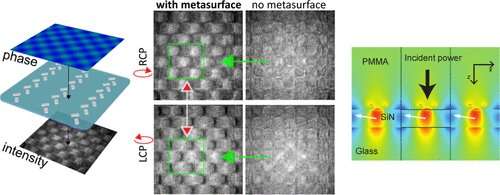Scientists have developed a low-cost microscopic imaging device small enough to fit on a smartphone camera lens which has the potential to make mobile medical diagnosis of diseases affordable and accessible.
Research published today in ACS Photonics from researchers at the University of Melbourne and the Australian Research Council Centre of Excellence for Transformative Meta-Optical Systems (TMOS). They are helping miniaturize phase-imaging technology using metasurfaces. This is only a few hundred nanometers thick. It is also about 350 times thinner than the thickness of a human hair and small enough to fit in the lens of a smartphone or other small camera.
The detection of diseases often relies on optical microscope technology to investigate changes in biological cells. These investigation methods usually involve staining the cells with chemicals in a laboratory environment as well as using specialized “phase-imaging” microscopes.
These aim to make invisible aspects of a biological cell visible. So, early-stage detection of disease becomes possible. Phase-imaging microscopes are bulky and cost thousands of dollars. It will put them out of reach of remote medical practices.
In addition to providing resources for remote medical practices, this new technology could one day lead to at-home disease detection. There the patient could obtain their own specimen through saliva or a pinprick of blood and then transmit an image to a laboratory anywhere in the world. The lab could then analyze and diagnose the illness.

